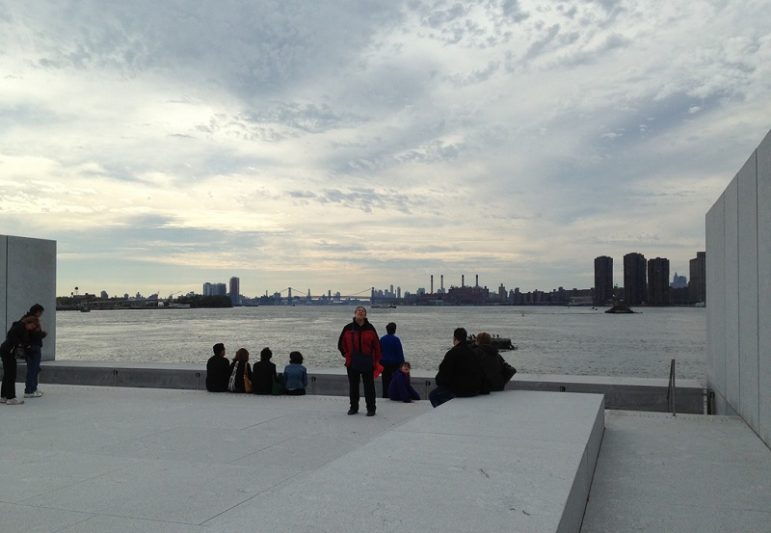
May 10, 2016; New York Times
New York City and the Four Freedoms Park Conservancy have reached a standoff in their four-year battle over the accessibility of the Franklin D. Roosevelt Four Freedoms Park located on Roosevelt Island. The debate centers around a 12-by-60-foot sunken terrace that features views of the East River and is said to give viewers “access to the visual experience intended by architect Louis Kahn,” the renowned twentieth-century architect who designed the park in the 1970s. Although changes were made to Kahn’s original design to ensure individuals using wheelchairs could gain access to the memorial, visitors must descend a few stairs to reach the sunken terrace, making this space inaccessible to visitors with mobility impairments.
The de Blasio administration argues that while the park was designed before the Americans with Disabilities Act (ADA), construction on the park didn’t begin until 2010, which is well after the ADA went into effect. Thus, since the terrace is not accessible, the park does not comply with ADA standards. The administration proposes that the nonprofit conservancy install ramps with rails to grant inclusive access to the sunken terrace. Representatives from the Four Freedoms Park Conservancy essentially contend that installing the ramps and rails would be an undue burden, as they would take away from the visual effect of Kahn’s design. Both the Four Freedoms Park Conservancy and the de Blasio administration state that the ADA supports their side in this argument.
Sign up for our free newsletters
Subscribe to NPQ's newsletters to have our top stories delivered directly to your inbox.
By signing up, you agree to our privacy policy and terms of use, and to receive messages from NPQ and our partners.
This dispute raises a number of important questions.
- How accessible is accessible enough? According to the Franklin D. Roosevelt Four Freedoms Park website, the entire memorial park spans four acres, and the terrace makes up only 720 square feet. Therefore, the inaccessible region makes up less than one percent of the park. However, when we look to Kahn’s own words, referring to his vision of the memorial to be a “room and a garden,” the terrace appears more significant, as it enhances the views from a region called the Room. Clearly, the architect meant for this sunken terrace to add value to the park. In that case, shouldn’t all of the park’s visitors be granted access to this space? Importantly, and ironically, if FDR himself were to visit the memorial created in his honor, he might not be able to access the terrace.
- Would a victory for the Four Freedoms Park Conservancy have an impact on how the ADA is interpreted? The ADA was enacted to prevent discrimination against people with disabilities. A win for this nonprofit could actually set a precedent for building owners and landowners to discriminate against people with disabilities under the guise of the artistic vision of the architect. If the argument is upheld in this case, it would be difficult to prove that ADA noncompliance is due to outright discrimination as opposed merely staying true to an architect’s vision.
- How have disabilities rights organizations responded to the dispute? The only disability rights group that has put out a statement regarding this story is the Roosevelt Island Disabled Association. The president of this association has offered support for the Conservancy’s side of the argument. However, it is important to note that the Association received funding from the Conservancy to create a sculpture of FDR. Thus, the opinion of the Association has the potential to be biased.
Although the de Blasio administration has declared the memorial park noncompliant with ADA regulations, the Four Freedoms Park Conservancy does not appear to be backing down, even after the administration withheld hundreds of thousands of dollars in funding and the certificate of occupancy. According to Sally Minard, the president of the Conservancy, “We believed then, as we do now, that the park more than meets the requirements for accessibility for those with a disability, and that the memorial as a whole is ADA compliant.”—Sheela Nimishakavi











